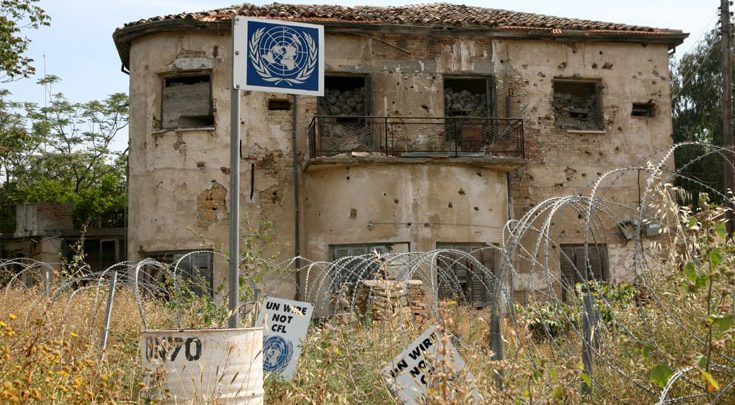Africa and Middle EastAllEuropeOngoingOngoing
Boundaries: The Fight over Cyprus
Cyprus is an island in the Mediterranean that has been the subject of a dispute between ethnic Greeks and Turks living on the island for many decades, which led to the island being separated into two distinct entities. But what led to the dispute goes back much further.

Humans have settled in Cyprus for thousands of years. The first settlers were the ancient Greeks, and in the centuries before Christ many countries occupied the island, including the Assyrians, the Egyptians, the Persians and the Romans. Later on, both the Arabs and the French conquered the island before Ottoman Empire (the forerunner of modern Turkey) told control of it in 1571.
For more than 300 years afterward the Ottomans controlled the island. Then, in 1878, the empire ceded administration of the island to the British under the terms of the Cyprus Convention, and in 1914 the United Kingdom formerly annexed the island after the Ottomans joined the side of the Germans in World War I. Finally, in the 1923 Treaty of Lausanne, the newly established Republic of Turkey withdrew any claims to the island.
But nearly 20% of the Cypriot population were ethnic Turks, and in the 1950s their leaders called for a partition of the island and the establishment of a Turkish state in the north. Some even called for Turkey to annex the entire island. At the same time, many Greek Cypriots — who made up the rest of the island’s population — wanted to unify the island with Greece. Many in Greece also advocated for this policy.
In 1960, after much violence between Greek and Turkish resistance forces on the island, the United Kingdom granted Cyprus independence. In the subsequent decade, though, violence continued, and it resulted in the displacement of many thousands of Turkish Cypriots. The Turks on the island also lost representation in the island’s government.
The situation on the island came to a boil as a result of a coup in Greece by members of the military, who then ruled the country as a dictatorship. This junta on July 15, 1974 initiated a coup by Greek Cypriot nationalists on the island, who overthrew Archbishop Makarios III, who was president of Cyprus. They then installed Nikos Sampson, who attempted to incorporate the island with Greece. This led Turkey to invade Cyprus 5 days later. They did so under the justification that the 1960 treaty that led to Cyprus’ independence gave them the right to restore order there, but the entire world rejected this justification.
By August of 1974, Turkey had captured the northern part of Cyprus, which encompassed about 37% of the island. During the conflict, 150,000 Greek Cypriots were displaced, as well as 50,000 Turkish Cypriots. The Turkish Republic of Northern Cyprus was then formally established in 1983, though only Turkey has ever recognized it. Since its establishment, some 150,000 Turks have settled in the north, many them forced by the Turkish government. About 4% of the island is considered a United Nations buffer zone, intended to keep the warring parties from each other.
In 2004, UN Secretary General Kofi Annan crafted a plan to reunify the island, and people on both sides of the dispute voted on the plan in a referendum. But the plan was very unpopular, especially among Greek Cypriots, and a two-thirds majority voted against it. Today, the dispute still lingers, though border restrictions have eased considerably. Also, a wall in the island’s capital of Nicosia, which had stood for many decades and had separated the two entities, was demolished in March of 2008.


